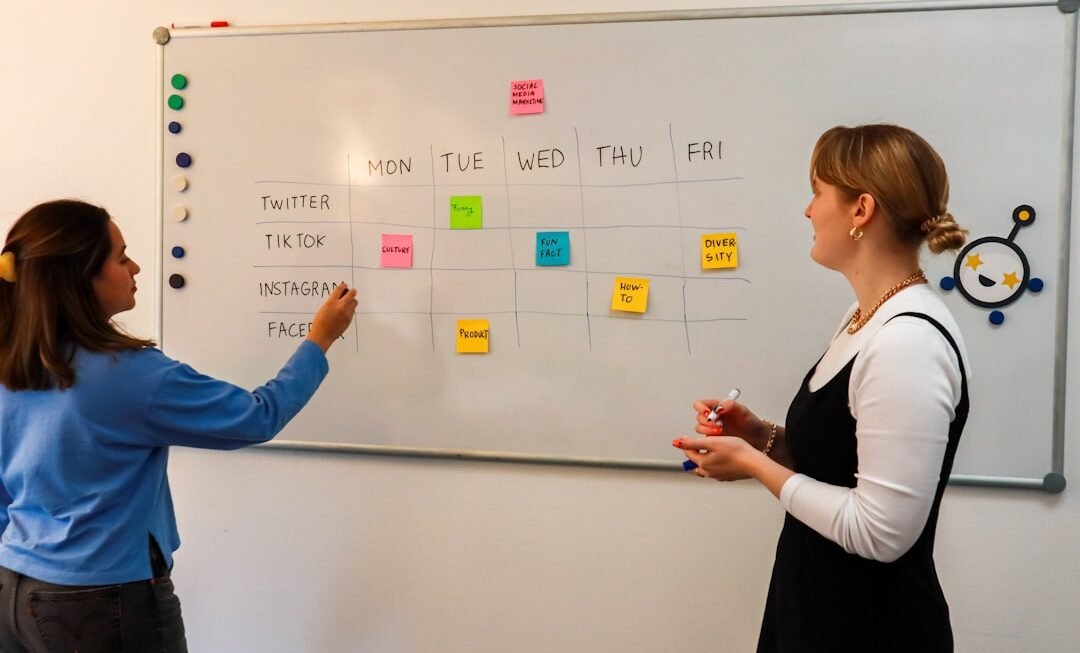The traditional approach to learning has long been characterized by a teacher-centered model, where the instructor serves as the primary source of knowledge and authority in the classroom. In this paradigm, students are often passive recipients of information, absorbing content through lectures, textbooks, and standardized assessments. This method emphasizes rote memorization and the regurgitation of facts, with little room for critical thinking or creativity.
The classroom environment is typically structured, with a clear hierarchy that places the teacher at the forefront, while students are expected to listen attentively and take notes. In many traditional educational settings, the focus is on delivering a standardized curriculum that adheres to predetermined learning outcomes. This often results in a one-size-fits-all approach, where individual learning styles and paces are overlooked.
The limitations of this traditional model have become increasingly apparent, particularly as society evolves and the demands of the workforce change. As technology advances and new pedagogical theories emerge, educators are beginning to question the efficacy of this conventional approach and explore alternatives that foster deeper engagement and understanding.
The Rise of Virtual Classrooms
The advent of technology has revolutionized education, leading to the emergence of virtual classrooms that offer new opportunities for learning. Virtual classrooms leverage digital platforms to facilitate instruction, allowing educators to reach students beyond the confines of a physical classroom. This shift has been particularly pronounced in recent years, driven by the need for flexible learning options and the global pandemic that necessitated remote education.
In virtual classrooms, students can engage with multimedia content, participate in discussions through chat features, and collaborate on projects using online tools. This environment fosters a sense of community among learners who may be geographically dispersed, enabling them to share perspectives and insights from different cultural backgrounds.
The rise of virtual classrooms has also prompted educators to rethink their teaching strategies, moving away from lecture-based instruction toward more interactive and participatory methods that encourage student involvement.
The Limitations of Passive Learning in Virtual Classrooms
Despite the advantages of virtual classrooms, passive learning remains a significant challenge in this context. Many educators inadvertently replicate traditional teaching methods by delivering lengthy lectures or presentations without actively engaging students. This approach can lead to disengagement, as students may find it difficult to maintain focus during extended periods of passive observation.
The lack of interaction can result in a superficial understanding of the material, as students are not given the opportunity to apply their knowledge or engage in critical thinking. Moreover, passive learning in virtual classrooms can exacerbate feelings of isolation among students. While technology enables connection, it can also create a barrier to meaningful interaction if not utilized effectively.
Students may feel disconnected from their peers and instructors, leading to a diminished sense of belonging and motivation. The limitations of passive learning highlight the need for educators to adopt more dynamic teaching strategies that promote active participation and collaboration among students.
The Benefits of Active Learning in Virtual Classrooms
Active learning represents a paradigm shift in educational practices, emphasizing student engagement and participation as central components of the learning process. In virtual classrooms, active learning strategies can take many forms, including group discussions, problem-solving activities, and hands-on projects that require students to apply their knowledge in real-world contexts. This approach fosters deeper understanding and retention of information, as students are encouraged to think critically and engage with the material on a personal level.
One of the key benefits of active learning in virtual classrooms is its ability to enhance student motivation. When learners are actively involved in their education, they are more likely to take ownership of their learning journey. This sense of agency can lead to increased enthusiasm for the subject matter and a greater willingness to participate in discussions and collaborative activities.
Additionally, active learning promotes the development of essential skills such as communication, teamwork, and problem-solving—competencies that are highly valued in today’s workforce.
Strategies for Implementing Active Learning in Virtual Classrooms
To effectively implement active learning in virtual classrooms, educators must adopt a variety of strategies that encourage student participation and collaboration. One effective approach is the use of breakout rooms during synchronous sessions, where small groups of students can engage in discussions or work on projects together. This format allows for more intimate interactions and fosters a sense of community among participants.
Educators can provide guiding questions or prompts to facilitate meaningful conversations within these smaller groups. Another strategy involves incorporating interactive tools such as polls, quizzes, and discussion boards into the virtual classroom experience. These tools can be used to gauge student understanding in real-time and encourage participation from all learners.
For instance, educators might use polling software to ask questions related to the lesson content, prompting students to reflect on their knowledge and share their thoughts with peers. Additionally, incorporating multimedia elements such as videos or simulations can enhance engagement by providing diverse ways for students to interact with the material.
Overcoming Challenges in Transitioning to Active Learning
Transitioning from traditional teaching methods to active learning approaches can present several challenges for educators. One significant hurdle is the need for professional development and training in new pedagogical techniques. Many instructors may feel unprepared or uncertain about how to facilitate active learning effectively within a virtual environment.
Providing ongoing support through workshops, peer mentoring, and access to resources can help educators build confidence in their ability to implement these strategies. Another challenge lies in addressing diverse student needs within an active learning framework. In virtual classrooms, learners may come from various backgrounds and possess different levels of technological proficiency.
Educators must be mindful of these differences and strive to create an inclusive environment where all students feel valued and supported. This may involve offering additional resources for those who require extra assistance or providing alternative assignments that cater to varying skill levels.
The Role of Technology in Facilitating Active Learning
Technology plays a crucial role in facilitating active learning within virtual classrooms by providing tools that enhance interactivity and engagement. Learning management systems (LMS) such as Canvas or Moodle allow educators to create dynamic course content that encourages student participation through discussion forums, quizzes, and collaborative projects. These platforms enable instructors to track student progress and provide timely feedback, fostering a more personalized learning experience.
Moreover, technology enables access to a wealth of resources that can enrich the learning experience. For example, educators can incorporate online simulations or virtual labs that allow students to experiment with concepts in a safe environment. Additionally, video conferencing tools like Zoom or Microsoft Teams facilitate real-time discussions and group work, breaking down geographical barriers and promoting collaboration among students from diverse locations.
Engaging Students in Active Learning in Virtual Classrooms
Engaging students in active learning requires intentionality on the part of educators who must create an environment that fosters curiosity and exploration. One effective method is to incorporate real-world scenarios into lessons that allow students to apply their knowledge in practical contexts. For instance, case studies or project-based assignments can challenge learners to solve problems relevant to their field of study while encouraging collaboration with peers.
Gamification is another powerful tool for enhancing student engagement in virtual classrooms. By integrating game-like elements such as points, badges, or leaderboards into assignments or activities, educators can motivate students to participate actively and strive for mastery. This approach taps into learners’ intrinsic motivation by making the educational experience more enjoyable and rewarding.
Assessing the Effectiveness of Active Learning in Virtual Classrooms
Assessing the effectiveness of active learning strategies in virtual classrooms requires a multifaceted approach that goes beyond traditional testing methods. Formative assessments—such as peer evaluations, self-reflections, or group presentations—can provide valuable insights into student understanding and engagement levels throughout the course. These assessments allow educators to gauge how well students are grasping concepts while also encouraging them to take ownership of their learning process.
Additionally, gathering feedback from students about their experiences with active learning can inform future instructional practices. Surveys or focus groups can provide insights into what strategies resonated with learners and which areas may need improvement. By actively seeking student input, educators can create a more responsive learning environment that meets the needs of all participants.
The Impact of Active Learning on Student Motivation and Engagement
The impact of active learning on student motivation and engagement is profound. When learners are actively involved in their education, they are more likely to develop a sense of ownership over their academic journey. This increased agency fosters intrinsic motivation—students become driven by their curiosity and desire for knowledge rather than external rewards such as grades or accolades.
Furthermore, active learning cultivates a sense of community among students who collaborate on projects or engage in discussions together. This social interaction enhances motivation by creating a supportive network where learners feel connected to one another and invested in each other’s success. As students share ideas and perspectives, they develop a deeper appreciation for diverse viewpoints while also honing their communication skills.
Embracing the Shift: Future Directions for Active Learning in Virtual Classrooms
As education continues to evolve in response to technological advancements and changing societal needs, embracing active learning will be essential for preparing students for success in an increasingly complex world. Future directions for active learning in virtual classrooms may include greater integration of artificial intelligence (AI) tools that personalize learning experiences based on individual student needs and preferences. Additionally, hybrid models that combine synchronous and asynchronous elements could become more prevalent, allowing for flexibility while still promoting active engagement among learners.
Educators will need to remain adaptable and open-minded as they explore innovative approaches that leverage technology while prioritizing student-centered practices. In conclusion, the shift toward active learning represents an exciting opportunity for educators to transform virtual classrooms into dynamic environments where students thrive academically and personally. By embracing this approach, educators can foster deeper engagement, enhance motivation, and equip learners with the skills necessary for success in an ever-changing world.












